
Review on 💨 SAYTAY USB Fan with LED Display - Small Personal Portable Programmable LED Fan, Fun USB Toy Gadgets for Men, Women - Perfect Gifts for Office, Home by Brett Islam

Nice novelty that works well most of the time, there are some limitations and issues
I saw an old single color version of this LED fan at a colleague's and on a whim decided to buy one for myself. When I realized there was this RGB (variable color through red, green, blue) version, I bought it instead. The fan seems to be of decent quality. The USB connector and metal gooseneck feel solid. The fan housing looks like metal but is probably just metalized plastic. The fan blades are made of flexible frosted clear plastic, and one of the two blades has a built-in flex circuit board inside with a row of tiny LEDs. As the fan spins and the digital circuitry inside the fan turns on the LEDs in the correct order and at the appropriate frequency, it draws an image that allows for consistency in our eyes' vision. The fan comes with a tiny four-page instruction manual and a mini CD-ROM. There is a folder on the hard drive and you need to copy this folder to your computer's hard drive. The file contains the main Windows EXE (executable) program file and some supporting files. You run an .exe to program the fan indicators, but doesn't need to "install" anything like most Windows programs require. CD-ROM does not support Apple computers. Only for Windows! However, nothing specifies which version or versions of Windows will work with the included files. Since it's from an unknown Chinese manufacturer and I don't trust its software, I ran mine on an old Windows XP computer that I only have for programming things like this that I get from China. Anything "wrong" with the software and my mainframes are still protected. So I know this software will work at least since XP and probably up to Windows 7 and maybe even 10. When started, the EXE program is a single fan programming screen. It consists of three areas: - Message area - Keyboard and icon area - Simulation area The MESSAGES area contains eight text fields in which you can enter eight text messages to be displayed on the fan. According to the operating instructions, you can actually program up to 20 messages, but it wasn't immediately clear to me how to get to the remaining 12 text fields. According to the user manual, each message can contain up to 20 characters including spaces, but is actually limited to 18 characters per message. Each message can consist of uppercase and lowercase letters, numbers from 0 to 9 and punctuation marks, as well as a set of graphic symbols and a set of "emojis" such as emoticons, frowns and hearts. After entering the text of the message(s), you will be given the opportunity to select three options for each of the messages. The parameters are as follows (here I will paraphrase their names): - Open - Show - Close. OPEN sets how the message is displayed, and you can choose from a short list that includes Left-to-Right Scroll, Right-to-Left Scroll, Top Down Scroll, Bottom Up Scroll, and Suddenly appears without scrolling. CLOSE has the same options as OPEN: DISPLAY dictates what the message does between OPEN and CLOSE, and options include things like Rotate Clockwise, Rotate Counterclockwise, Blink 3 Times, and Display Permanently with No Effects. Apart from that, every post has an option to actually edit the image. Clicking on the special icon next to each message's text field will open a new window showing an enlarged bitmap of the text as it is currently specified in the main edit screen. All character pixels and graphics of the message can be edited using the pen tool and the eraser tool to set and erase individual pixels of the message image. For example, you can change the shape of an alphanumeric character or image, or draw an image that is not accessible from a computer keyboard. There is also a marquee tool that isn't mentioned in the manual and I couldn't find the reason for it or what it's supposed to do. Below the message dot matrix described above is another smaller dot matrix that you can use to manipulate the color. About eight colors are defined, and each color is associated with a row of this matrix of dots. Clicking on cells in this matrix assigns the color from their row to the intersecting column of the message matrix above. You cannot change colors across rows in a message, only across vertical columns in a message matrix. In other words, you can specify that each pixel-wide vertical message display tile has a color of your choosing, but you cannot similarly specify colors for each pixel-wide horizontal display message tile. I had problems with this part. , detailed pixel editing of messages. First, a dot matrix cannot be scrolled in its dedicated window, and while the window can be stretched to fill your computer screen, it still wasn't wide enough to allow for editing, at least on my computer. the full width of the message if that message used the full possible message length of 18 characters; Some of the longer messages cannot be edited. I consider this a mistake. With some computer and monitor combinations, this may not be a problem. Another problem was that while you can paste individual pixels with the Pen tool, the Eraser tool seems to work with small blocks of pixels rather than individual pixels. This method is likely to erase large areas of the dot matrix quickly, but it makes routine adjustment and cleaning of individual pixels tedious. As you type a message, select an option, and additionally edit pixels, you can click at any time. The SIMULATION section shows a rough representation of what fan pics/posts will look like, although what is shown here is quite imprecise in many respects. It does, however, offer decent confirmation that you're getting what you expect when the program is uploaded to a real fan. You can abort the simulation at any time by clicking the Stop button. When your program is ready, you need to make sure the fan is connected to the computer's USB port, and then click the "DOWNLOAD" button. A progress bar will appear on the screen. Graphics while one of the LEDs on the fan is flashing. In my tests it took 20-30 seconds for 5 messages and will probably take longer if you have more messages. When the download is complete, the program returns to its normal state. You can save the program on your computer's hard drive. You should be able to save as many different programs as you like. There doesn't seem to be a way to load the program from the fan into the software on the computer. The single button on the fan housing turns the fan on and off. When it is on, the fan spins and all the programmed messages are displayed in sequence one after the other. After the last programmed message has been displayed, the cycle repeats from the first message. Pressing the button again stops the fan and display. I found the messages displayed to be bright and clear and the appearance fairly consistent. There is no brightness adjustment. The fan is quiet enough, just whispers. It doesn't move much air, but if it's just a foot or so from your face, you'll feel it. It's really a visual novelty and not a serious fan of real cooling. The motor is too weak and the fan doesn't turn as fast. Add to that the soft, flexible fan blades and the fan is unlikely to damage anything that comes in contact with it. I stuck my fingers in the fan multiple times and it just stopped the fan and the finger didn't hurt. The instructions say that after about 3 hours of operation, you should turn off the fan for a while to extend its lifespan. This is a confirmation that the product is not really a serious fan. The fan blades are not perfectly balanced, so there is some vibration. Most of it is gooseneck. When the gooseneck comes into contact with a table or other object, you may hear an uncomfortable sound as the vibrating gooseneck hits the surface of the object. I noticed that the fan blades deformed a bit from the long contact with the package and there was a lot more vibration initially. After a few hours out of the box, the fan blades seemed to be in the right shape and balance, and vibration was reduced. One more thing. The packaging and user manual indicate that this fan uses a "microwave oven". Presumably this serves to transmit program data from the computer to the digital circuitry in the fan header that controls the LEDs. I'm not sure what they mean by "microwaves" but I'm not sure if they mean literally that microwaves transmit digital data. Some type of wireless data transmission is probably being used, and it doesn't matter which. It hardly looks like a selling point to mention as if it were a feature. So a nice new product that works well most of the time but has some issues with underdeveloped software, minimal instructions and an obvious build quality that probably won't stand up to heavy or constant use.
- Fingers crossed
- Weight
New products
Comments (0)
Top products in 📱 USB Gadgets

Floor fan Electrolux EFF-1004i, black

25 Review
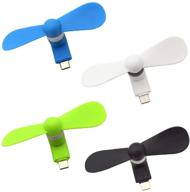
Mini USB Type C Fan Portable for Samsung Galaxy Note 8 Note9 A10 A9 Star A9s A8s A8+ A6s, Moto G7 G6 LG Stylo 4 Xiaomi Mi A2 Mi 8 Huawei P30 and More

12 Review

Floor fan VITEK VT-1948, black

60 Review
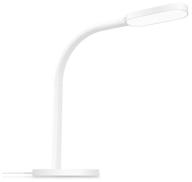
💡 Yeelight Portable LED Lamp YLTD02YL - White Color, 5W, Stylish and Versatile

12 Review
Another interesting products

Apple AirPods Pro MagSafe RU Wireless Headphones, White

159 Review
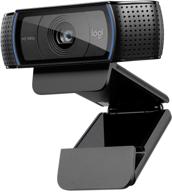
💻 Get Amazing Video Quality with Logitech HD Pro Webcam C920 (Discontinued Edition)

83 Review
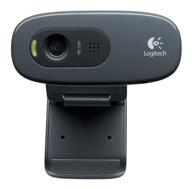
Logitech HD Webcam C270: Crisp 720p Widescreen Video Calling & Recording (960-000694), Lightweight and Portable at 3.15 lb.

192 Review
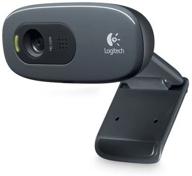
🎥 Logitech C270 Webcam: Crystal Clear Video and Superior Quality

183 Review

